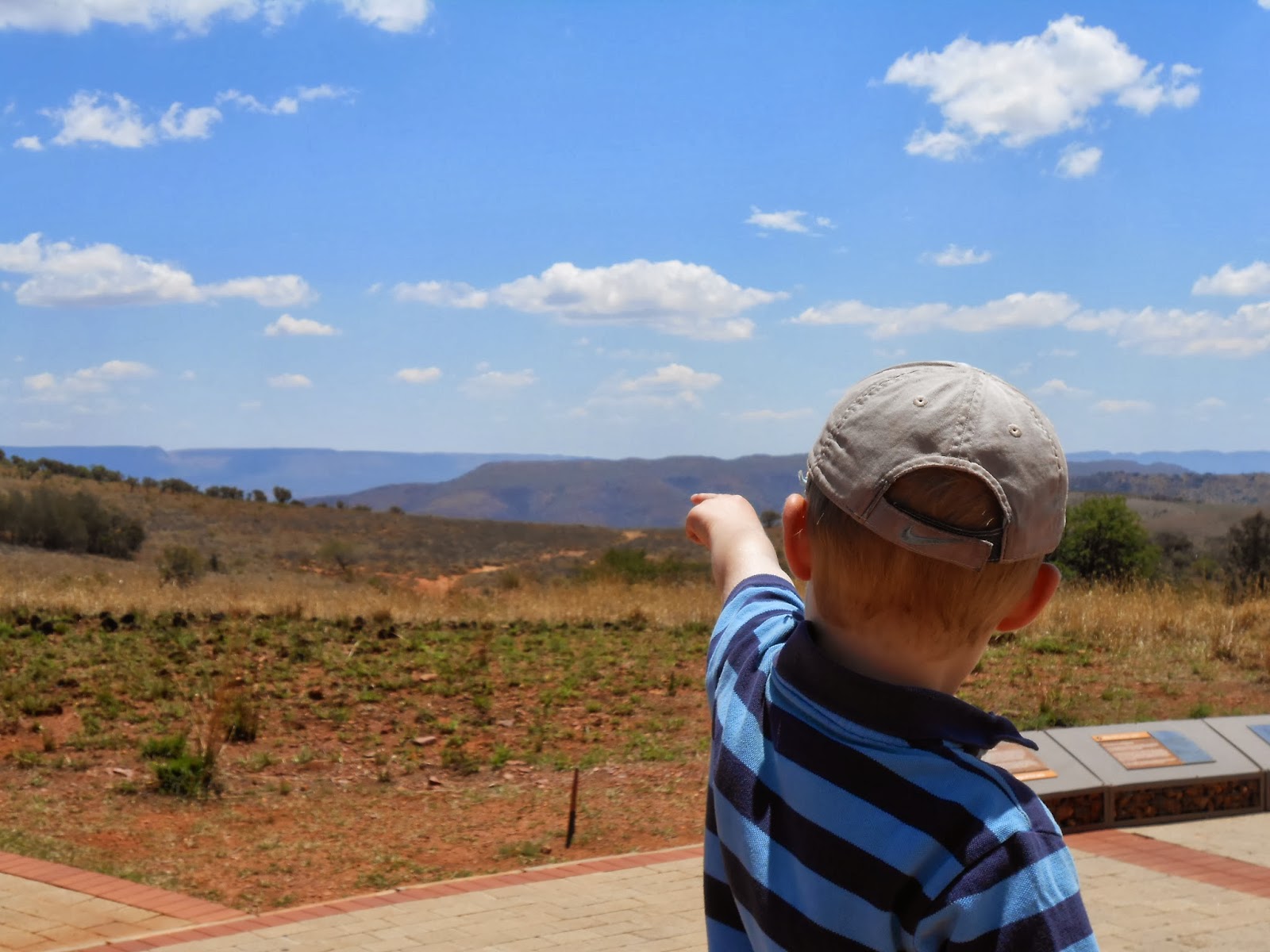Widely recognized as "the place where all humankind originated," the Cradle of Humankind is a UNESCO World Heritage Site located about 50 kilometers north-west of Johannesburg. As a huge site of over 180 square miles, the Cradle of Humankind's world renowned Sterkfontein Caves stand as the longest continuously running fossil excavation in the world. Many of the oldest hominid fossils ever found come from this web of limestone caves, including --for those of you (unlike me) science buffs who understand paleontological-speak-- "Mrs. Ples," "Little Foot," and the "Taung Child."
We visited two pieces of the Cradle of Humankind on a sunny day in October. (Yes. I am entirely ignoring the fact that it took me three months to blog this.) Traveling an hour outside of Johannesburg, we found ourselves surrounded by large skies and yellow and purple farm fields until we suddenly arrived at a strangely out-of-place collection of stone columns marking an entrance to the Maropeng Visitor's Center.
This pieced-together museum of human history holds an ecclectic mix of dinaosaur and hominid fossils, the complexities of DNA, a boatride through the destructive forces of the earth, meteorological exhibits, and commentary on the movement of the human species past, present, and future. In layman's terms, it was just weird.
Here we are on the eerie boat ride...
after which we had our pictures taken like amusement park goers after a ride on the roller coaster. I have never purchased one of these cheesy photos before, I swear. But here it cost approximately one dollar... so here we are!




More weirdness.


After exiting the museum into a world of normalcy again, views of the surrounding South African hills are nothing but bright and gorgeous.
We then moved onto our second location, the Sterkfontein Caves. These dolomitic caves are made up of a mixture of limestone and breccia sediments. Though hominids probably lived all over Africa, this site had ideal conditions that allowed for the preservation of fossils.
Here Jonas gets ready to enter...



Pretty much all of my cave pictures look the same... darkness, Jonas looking up, dirty things.

Some spaces in the caves are small enough they must be stooped or crawled through.
Upon exiting the cave, hikers come across a bronze bust of Dr. Robert Broom, discoverer of "Mrs Ples." Visitors are encouraged to rub his hands for wisdom, or his nose for good luck.
Heading out of the cave and onto a small nature hike back to the museum...

















